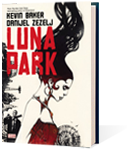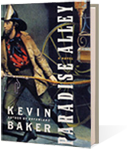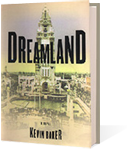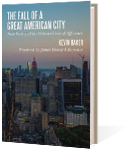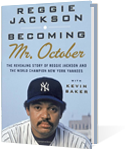By Kevin Baker
They swept over the plains at speeds of 100 miles an hour, outracing cars and shorting their ignitions; forcing down planes and stopping trains in their tracks. They were accompanied by lightning and thunder, or they moved in awesome silence, driving hundred of panicked birds before them—clouds of dust 10,000 feet high, the prairie winds carrying off the rich topsoil of the American heartland.
These were the dust storms of the 1930s, and they seemed like a judgement from God. “This is ultimate darkness. So must come the end of the world,” a Kansas woman wrote in her diary. “The nightmare is becoming life,” another observer wrote, as what seemed like a curtain of black mud descended over everything. The storms and the wreckage they left behind—both agricultural and human—would become the very emblem of the Great Depression. The high plains dust seemed to say not only that the land had failed, the farms had failed, but that America had failed.
“There was always the grass ahead of us on and on./ Father to father’s son./ The meaning of the dust storms was that grass was dead,” wrote Archibald MacLeish in his book-length poem, The Land of the Free.
“We wonder whether the great American dream/ Was the singing of locusts out of the grass to the West and the/ West is behind us now…/ We wonder if the liberty is done:/ The dreaming is finished.”
It is impossible to imagine any such environmental breakdown, or any such crisis of confidence, overtaking us today. Or is it?
Over the last five years, drought has gripped many of the Plains states and the dust has again begun to blow. Not, to be sure, like it did during the plague years of the 1930s—but enough for Congress anted up $6 billion in emergency drought relief last summer. As the region plunges deeper into another one of its dry periods, it is important to remember that the terrible dusters of that time were by no means a wholly natural disaster.
The Great Plains have always occupied a choice spot in the American psyche. Their sheer beauty and immensity seemed to embody our nation’s limitless abundance and potential. Donald Worster, in his brilliant history, Dust Bowl, The Southern Plains in the 1930s, points out that Walt Whitman called them “North America’s characteristic landscape,” and suggested “that here would be played out the true heroic drama of our history.”
A more accurate description might have been found in another early term for the area: “the Great American Desert.” For thousands of years, even before the arrival of the American Indian, the Plains have been dry, windswept grasslands. This has always been a tenuous ecosystem, much of it officially classified as “semiarid,” and subject to periods of drought that could last up to a quarter-century.
One such dry spell wrecked much of the local cattle industry back in the 1880s, and there were dust storms recorded as far back as the 1860s, but none of this detered the “sodbusters,” the small farmers who followed the cattlemen into the region. With incredible endurance and innovation they clung to their small claims, fulfilling their dreams of living free on their own land. They believed with a religious fervor in Charles Dana Wilber’s contention that “rain follows the plow,” and the new pseudo-science of “dry-farming,” and they dreamed of threading the plains with railroads and even building cities full of skyscrapers on the prairie vastness.
In the 1910s their perseverance was reward with a worldwide grain boom, facilitated by the outbreak of World War I, and a host of new, mechanized farm machinery that reduced the time it took to bring an acre of wheat to the granary from 58 to 3 hours.
This would prove to be the beginning of the region’s undoing. The bottom dropped out of agriculture after the war ended and the farmers were left with heavy debt on their shiny, modern machinery. The laissez-faire America of the 1920s had little to offer them beyond Calvin Coolidge’s suggestions that failing farmers needed to find a new line of work.
The farmers themselves responded in the only way they knew how, by plowing up still more—and more marginal—land, and planting it with wheat, the leading cash crop. Yet with each new bushel dumped on the market, farm prices dropped ever lower. The sod had been busted all right, the grasses plowed under, and now there was little to hold the dirt in place. Then the droughts returned, worse than ever. Something had to give—and it was the soil.
The dust began to blow in 1932, and by 1933 there were 179 dust storms in a single month, some of them carrying Plains soil all the way to the Eastern seaboard. But it was the following spring that the storms turned into a truly terrifying phenomenon. A storm that began in Montana and Wyoming on May 9, 1934, drove some 350 million tons of dirt east; dropping an estimated four pounds of soil for every inhabitant on the citizens of Chicago, blackening the midday sky over Buffalo. By the morning of May 11 it was sweeping through Boston, New York, and Atlanta, finally settling on the decks of ships 300 miles out to sea.
The storms kept returning every spring, and they would not stop until the end of the decade. In 1935, several counties in Kansas, Texas, and Oklahoma went six weeks without a day entirely clear of dust. A single storm “carried away from the plains twice as much earth as men and machines had scooped out to make the Panama Canal,” and that year alone there were 40 dusters that reduced visibility to less than one mile. There were 68 more such storms in 1936, 72 in 1937, 61 in 1938. As late as March, 1939, an Oklahoma duster put enough dirt in the air to cover an estimated five million acres one foot deep.
The damage done to the land was awful. The region lost some 850 million tons of topsoil just in 1938. Saharan dunes of sand covered homesteads, and animals both wild and domesticated died in droves.
The damage done to the people was worse. The farmers of the Dust Bowl told jokes about the storms and called the blowing dirt “vitamin K.” But it killed them, too; an estimated 33 dead in a single Kansas county during April, 1934, from the “dust pneumonia,” the silicon particles settling in their lungs. Adults and children alike, taken on the road, wandered blind and choking, and smothered in the drifts. Farmers worked their field in goggles and homemade gas masks, looking like soldiers who had somehow wandered out of the trenches of the Great War. Those who survived could do little but sit inside, through storms that lasted as long as three-and-a-half days; unable to read, to talk, to sleep, to do anything but watch the dust drift in past closed doors and windows, and the wet towels and newspapers they stuffed into the doorjambs.
It was an ecological disaster with few parallels, akin only to the ancient deforestation of China, or the ruin of the old Mediterranean bread basket, or the Soviet Union’s destruction of the Aral Sea. The New Deal administration of Franklin Roosevelt at least responded with alacrity, creating the first national farm policy in our history. Farm subsidies were begun, and billions of dollars in federal aid were poured into the Dust Bowl to prevent further erosion, and to restore the land; to save family farms and provide farmers with public works jobs, or resettlement money, or home relief. For the first time, some marginal lands were permanently restricted from cultivation. A favorite program of FDR’s even had 220 million trees planted in “shelterbelts” along the edges of the western prairies.
All of these programs helped to restore the human and physical ecology of the Southern Plains—but in the end the people left anyway, a total of 3.5 million of them during the 1930s; the Okies and the Arkies and the exodusters of The Grapes of Wrath, heading West again, this time in ramshackle cars and trucks. They were widely despised and feared, even prevented from entering California at first. Professional geniuses such as H.L. Mencken proclaimed, “They are simply, by God’s inscrutable will, inferior men.” But eventually, with the help of the social welfare state and the war boom, and the postwar boom, and the same tenacity with which they had clung to the Plains, the exodusters realized their dreams in the suburbs of Orange County, and a thousand other California subdivisions.
Those who remained behind quickly forgot any lessons the thirties might have taught them. World War II sent agricultural prices soaring again, and soon the farmers of the Plains were chafing against government “restrictions” and plowing up marginal grasslands. And soon enough, the dust storms returned, to the point where, from 1954-1957, twice as many acres of the Plains were damaged every year by wind erosion as there had been from 1934-1937. Sales of wheat to the Soviet Union sparked another boom in the 1970s—and still more dusters.
None of it was anything like the 1930s. There were new methods of conservation, and deep-well irrigation, and the hybrid crops of the “green revolution,” to fight off the consequences of ignoring the natural environment. The West, too, was fundamentally different. The vast exodus never really ended, and over the course of the 1990s, 60 percent of the counties in the Great Plains states lost population. The region has now returned to the old definition of a “frontier,” with six or fewer people per every square mile. The small, yeoman farmers have been largely replaced by “agribusiness,” and other industrial concerns.
Can we can count on these large, multinational corporations to be any better stewards? In the spring of 2002, Congress passed a brand new, omnibus farm-subsidy bill to the tune of $180 billion. Are such subsidies, once intended to preserve small family farms, still appropriate for big business, or should we adopt other methods?
These are the sorts of questions we will have to decide in the years ahead. The new water sources of the Plains states are not likely to be infinite and we may well have to face a much greater drought threat, the prospect of global warming. The blindly optimistic among us refuse to acknowledge that nature can offer any limits to our ambition. The dust storms of the southern plains sing a different tune.

